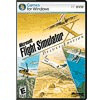
PLEASE NOTE: This product must not be used for any real flight training. The history of the L-4 is best summed up by Ken Wakefield, author of "The Fighting Grasshoppers" and "Lightplanes at War", who graciously contributed the following overview of this aircraft: "The Piper L-4 Grasshopper of WW2 was the military version of the highly popular pre-war J3 Cub, by which name it was more widely known to service personnel. Of the 5,500 L-4 variants produced between 1942 and 1945, some went to liaison squadrons and of the USAAF, but the vast majority went to US Army Ground Forces, for use as Air Observation Posts (Air OPs) with the Field Artillery. In both air and ground forces, the L-4 was also used as a flying Jeep, among other things carrying priority mail and personnel between HQs and command posts. Its Continental engine produced only 65hp, yet the L-4's excellent short field performance enabled it to operate from the smallest of improvised airstrips, including roads, adjacent to command posts. Unlike most other combat aircraft, the L-4 was unarmed and unarmoured. It was one of the smallest aircraft of WW2 and, with a cruising speed of only 75 mph, it was the slowest. Nevertheless, it has been claimed that a single L-4, directing the fire power of an entire Division, could bring a greater weight of explosives to bear on a target then any other aircraft of that period. With the exception of the atomic bomb carrying B-29 Superfortress, no other single aircraft had the destructive capability of the diminutive L-4. It was most widely used in Europe, where more than 2,700 served with the Field Artillery, and of these nearly 900 were lost through enemy action or in accidents. Of those that survived the war, about 150 were shipped back to the US, most of the remainder eventually being sold to civilian purchasers in Britain, France, Switzerland, Denmark and elsewhere in Europe. More than 60 years on many of these are still flying with, in recent years, an increasing number being restored to their original military configuration and markings. A truly remarkable 'warbird', long to be remembered. "So successful was the L-4 that it's military use continued on through to the Korean War, and as recently as Vietnam. Today, hundreds still fly on as civilian light aircraft, some as meticulously restored military aircraft and others in colourful civilian schemes. We hope you enjoy flying this faithful rendition of history.
Four models: Carefully researched details and paint schemes (14 in all): WWII: Post-War Pacific Korean War Vietnam War Present day Restored Military: Present Day General Aviation Please note: The Manual and Paint Kit can be found in the "...\Microsoft Flight Simulator X\SimObjects\Airplanes\L-4 Grasshopper AGF" folder.
The E-Commerce enabled download executable is about 185 MB in size. The purchase screen will appear when you run the executable. The servers do support Resume, however we do not recommend certain download managers because they can sometimes corrupt large downloads. Version 1.00 - Via direct download (185 MB)  Click Here To Download Today! Click Here To Download Today!
For support on this product, please visit the developer's website here: http://www.flight-replicas.com/Contact.htm

MICROSOFT FLIGHT SIMULATOR X Windows: Windows XP or Vista |
Click image. Use arrows or mouse wheel to scroll. |